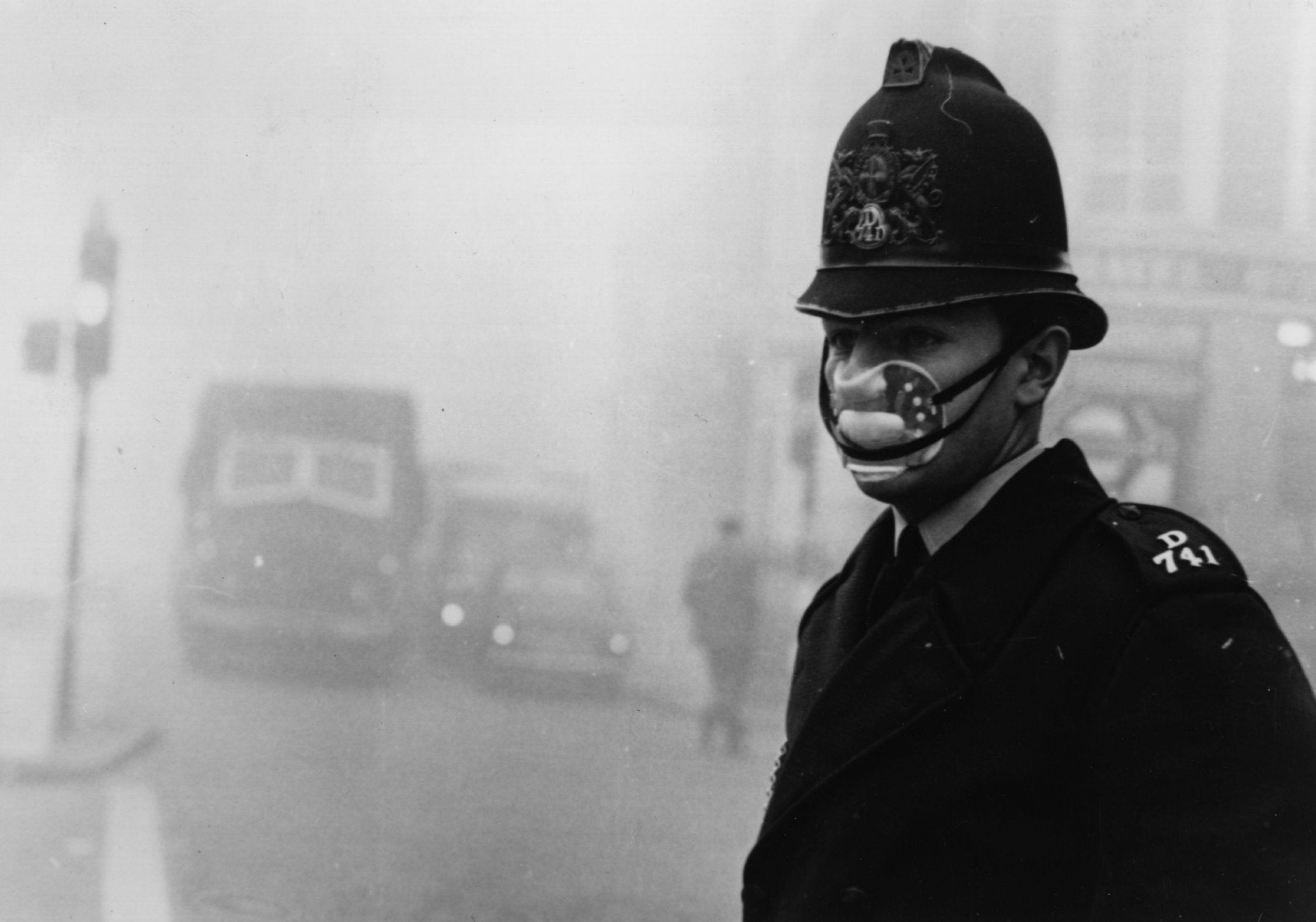Climate crisis: Is air pollution actually getting worse in Britain?
Analysis: Today we have both the means and the motive to tackle this deadly problem

The developed world has largely eliminated the opaque pea-souper smogs which marinaded city streets in dangerous toxins until the mid-20th century, but serious air pollution problems remain.
In the UK, recent reassessment of the scale of the problem revealed 64,000 deaths were attributed to poisonous air in 2015, and across Europe it is believed more people now die from air pollution than from smoking.
So is our air actually getting worse, or have we become better at assessing the damage?
The answer is the latter: air in Britain is far cleaner than it has been in well over a hundred years.
Our former dependence on coal in the home and for industry meant emissions of black smoke were up to 50 times higher in the decades before the clean air act of 1956 than they are today.
During the great London smog of 1952, 4,000 people died in the space of one week from breathing the deadly fumes.
Coal’s rapid demise has meant sulphur dioxide pollution has collapsed, and between 1970 and 2017, annual emissions of nitrogen oxides have fallen by 72 per cent, government figures released this year show.
Meanwhile, PM10s (particles of soot, dust and other matter) have fallen by 73 per cent and PM2.5s (small particulate matter) are down by 79 per cent.
This month the country experienced its first entire week in which coal-fired power stations made no contribution to the National Grid since the world’s first coal-fired plant opened in London in 1882.
This is undoubtedly positive, but despite this apparent progress, Britain’s air remains among the dirtiest in the developed world.
Britons are twice as likely to die from pollution as people in Sweden, New Zealand, Australia, Canada and Ireland, and the country has the third highest rate of pollution deaths in western Europe.
Most areas of the UK are breaching EU legal limits for nitrogen oxides – limits that should have been met in 2010.
Forty towns and cities in the UK are breaking World Health Organisation guideline limits for fine particle pollution, according to Friends of the Earth.
London remains a major hotspot for nitrogen oxides – for the past seven years London’s air has been illegally breaching limits designed to be met in 2010.
One of the worst sources of pollution affecting Britons in the 21st century is the diesel engine.
In the late 1990s diesel cars accounted for little more than 10 per cent of the UK fleet, but policies designed solely to tackle carbon emissions rather than air pollution in general have seen a colossal rise in the number of diesel cars on British roads.
By March 2017, diesel cars made up 43.5 per cent of total sales in the UK. This appears to be the peak, and sales have subsequently fallen fast as people have become aware of the risks. Road travel makes up the single greatest contributor to nitrogen oxide pollution.
But beyond tackling diesel, the UK has an enormous challenge in cleaning up its filthy air and simultaneously doing its bit for addressing the climate crisis.
Policies are required to ensure targets to replace fossil fuel dependent vehicles are met, plans for airport expansion halted, and the withdrawal of government support for renewable energy schemes and technology must be re-evaluated.
This week the International Energy Agency said investment in renewables needs to more than double in ten years to meet the terms of the Paris climate agreement.
In the 21st century we have both the means and the motive to tackle this problem.
We now have the clearest view we have ever had of the astonishing level of damage we are doing to ourselves.
A major report released on Friday suggests pollution is damaging every organ in our bodies. If that wasn’t horrific enough, previous studies indicate poisonous air has influences Alzheimer’s rates, causes skin to age, increases the risk of babies being born prematurely and under-weight and has been linked to cognitive impairment in children and teenage delinquency.
The progress on clean air the government figures above demonstrate is really a marker of how abominably terrible our air has been for a long time.
While our air may be better than it’s been in 150 years, it is still desperately poor, and people are dying needlessly.
Join our commenting forum
Join thought-provoking conversations, follow other Independent readers and see their replies
Comments